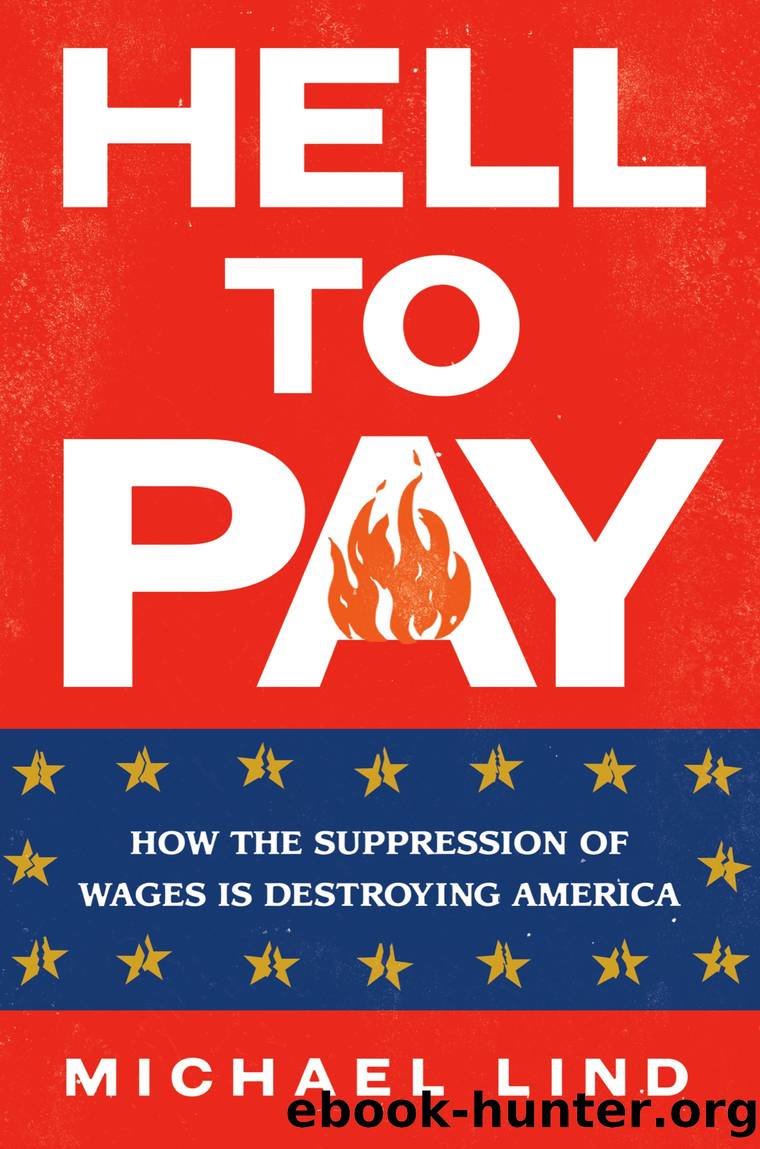Hell to Pay by Michael Lind

Author:Michael Lind [Lind, Michael]
Language: eng
Format: epub
Publisher: Penguin Publishing Group
Published: 2023-05-02T00:00:00+00:00
* * *
Like other pathologies of contemporary American society, todayâs partisan polarization is influenced indirectly by the decline of worker power.
Mid-twentieth-century America not only had the first (and last) mass middle class in American history but also was built on mass politics. The political system was shaped by the influence of mass-membership organizations: trade unions, the once-powerful farmersâ organizations, well-attended churches, and fraternal and civic organizations. The Democratic and Republican parties themselves were national federations of state and local parties, in which great numbers of Americans took part in some way.
The result was what the journalist John Chamberlain in his book The American Stakes (1940) described as âthe broker state.â[15] Politicians and government administrators brokering deals among the organized groups of organized blocs naturally tended to produce a transactional politics with plenty of room for compromise among the big playersâbusiness, labor, the farm lobby, urban political machines.[16]
That world has vanished. The destruction of private sector unions by American business and government has eliminated the major institution that empowered working people, apart from their participation as voters in the political system. Half a century ago, labor leaders like Walter Reuther and George Meany were household names, powerful leaders who negotiated with presidents and congressional leaders as well as corporate executives. Today many union members themselves would be hard-pressed to name any national union officials. Public sector unions continue to influence the Democratic Party, but the decline of private sector unions has resulted in the near monopoly of lobbying about private sector economic issues by business interests, influencing Democrats and Republicans alike.
Meanwhile, the parties themselves have changed from mass-membership federations into mere brands bankrolled by billionaires and corporations and responsive chiefly to members of the college-educated overclass. The decision of both national parties in the 1970s to select candidates in open-party primary elections or caucuses, rather than in conventions dominated by career politicians, was intended to make American politics more democratic. Instead, the primary system has made American politics more oligarchic.
For decades primary voters as a share of eligible voters has fluctuated between 10 and 30 percent, compared with around 40 percent in midterm general elections and around 60 percent turnout in general elections in presidential election years.[17] Moreover, the small number of voters who take part in party primaries are not typical of their own parties. They are better educated, more affluent, and more ideological than most Democrats and Republicans. A study in 2018 found that 62 percent of Democratic primary voters and 58 percent of Republican primary voters had bachelorâs degrees or more, compared with only about a third of the American public. At a time when the average household income was $60,309, more than half of the primary voters in each party came from households making more than $75,000 a year.[18]
Affluent Democrats and affluent Republicans alike tend to be motivated by âpost-material valuesâ and passionate about polarizing social issues like abortion or gun control, unlike Americaâs multiracial working-class majority, whose chief concerns according to pollsters are quotidian issues like the economy, health care, and safety from crime.
Download
This site does not store any files on its server. We only index and link to content provided by other sites. Please contact the content providers to delete copyright contents if any and email us, we'll remove relevant links or contents immediately.
The Secret History by Donna Tartt(18083)
The Social Justice Warrior Handbook by Lisa De Pasquale(11941)
Thirteen Reasons Why by Jay Asher(8416)
This Is How You Lose Her by Junot Diaz(6411)
Weapons of Math Destruction by Cathy O'Neil(5801)
Zero to One by Peter Thiel(5463)
Beartown by Fredrik Backman(5306)
The Myth of the Strong Leader by Archie Brown(5217)
The Fire Next Time by James Baldwin(4998)
How Democracies Die by Steven Levitsky & Daniel Ziblatt(4940)
Promise Me, Dad by Joe Biden(4899)
Stone's Rules by Roger Stone(4833)
100 Deadly Skills by Clint Emerson(4663)
Rise and Kill First by Ronen Bergman(4537)
A Higher Loyalty: Truth, Lies, and Leadership by James Comey(4532)
The David Icke Guide to the Global Conspiracy (and how to end it) by David Icke(4361)
Secrecy World by Jake Bernstein(4355)
The Farm by Tom Rob Smith(4306)
The Doomsday Machine by Daniel Ellsberg(4233)
